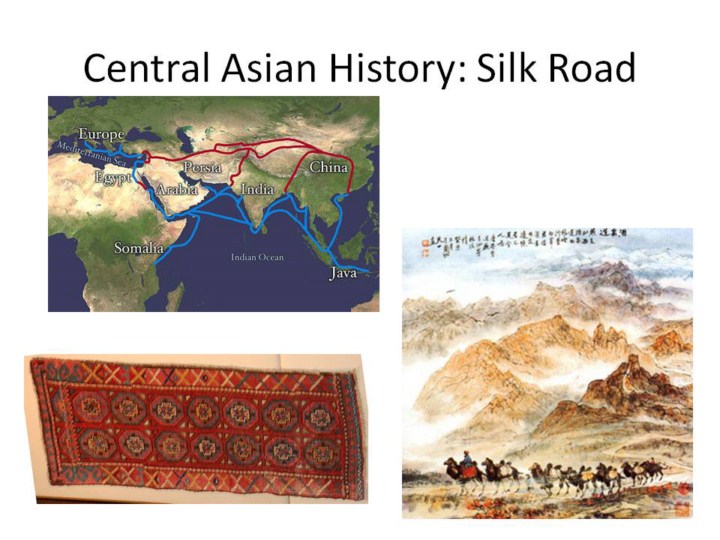| front |1 |2 |3 |4 |5 |6 |7 |8 |9 |10 |11 |12 |13 |14 |15 |16 |17 |18 |19 |20 |21 |22 |23 |24 |25 |26 |27 |28 |29 |30 |31 |32 |33 |34 |35 |36 |review |
 |
Central Asia has historically been closely tied to its nomadic peoples and the Silk Road. As a result, it has acted as a crossroads for the movement of people, goods, and ideas between Europe, West Asia, South Asia, and East Asia. During pre-Islamic and early Islamic times, Central Asia was a predominantly Iranian[6][7] region that included the sedentary Eastern Iranic speaking Bactrians, Sogdiansand Chorasmians, and the semi-nomadic Scythians and Alans. The ancient sedentary population played an important role in the history of Central Asia. After expansion by Turkic peoples, Central Asia also became the homeland for many Turkic peoples, including the Kazakhs, Uzbeks, Turkmen, Kyrgyz and Uyghurs. Central Asia is sometimes referred to as Turkestan. From the 17th century, up to the end of the 20th century, most of Central Asia has been part of the Russian Empire and the Soviet Union, both being Slavic majority countries. As of 2011, the "stans" are still home to about 7 million Russians and 500 thousand Ukrainians.[8][9][10]
|